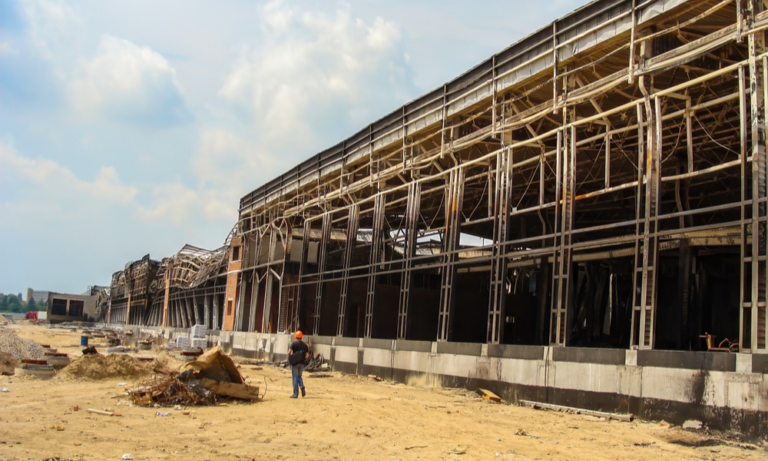Estimated reading time: 5 minutes
When it comes to construction, framing inspections can feel like a final exam—only with higher stakes. A solid frame not only keeps your structure upright but also ensures it complies with local building codes. Trust me, skipping an inspection (or failing one) isn’t worth the trouble. Let’s dive into what you need to know to pass with flying colors.
What You’ll Learn
Why framing inspections are crucial.
Key areas inspectors focus on.
Common reasons for failed inspections.
Practical tips to pass on the first try.
Why Are Framing Inspections Necessary?
Inspections aren’t just red tape; they’re about safety. A well-inspected frame supports the entire structure, ensuring it withstands time, weather, and life’s surprises (yes, even that trampoline your kids keep jumping on indoors). Beyond safety, inspections protect your investment. Fixing issues mid-construction is far cheaper than after the walls go up.
Building Codes: What Are They, and Why Do They Matter?
Building codes are rules that ensure your structure is safe, efficient, and sturdy. They vary by location and project type, but they cover everything from materials to spacing between studs. Think of them as the playbook for building a winning project. Staying up-to-date with local codes is key, especially since non-compliance can lead to fines or delays. If you’re curious about how framing impacts your building’s strength, check out this guide on building strength and framing.
Key Areas Inspected During Framing

During a framing inspection, professionals focus on specific elements to ensure compliance and safety. Here’s what they’ll examine:
1. Alignment and Foundation
Inspectors check that your framing aligns properly with the foundation. Misalignment can lead to structural instability or even collapse (and nobody wants that).
2. Materials
Using subpar materials is a recipe for failure. Inspectors will ensure that you’re using high-quality, code-compliant options like treated lumber or approved steel grades. For help choosing materials, take a look at wood vs. steel framing.
3. Fasteners and Connections
Nails, screws, and brackets are small but mighty. Inspectors ensure they’re properly placed and secure to prevent future structural issues.
4. Spacing and Support
Proper spacing of studs, joists, and beams is critical. If you’ve got uneven spacing or inadequate support, you’ll be looking at a failed inspection.
5. Openings and Framing Details
Window and door openings, beams, and headers must meet size and reinforcement standards. Any deviation can lead to structural problems—or a reinspection.
Common Issues That Cause Failed Inspections
Even experienced contractors can run into problems during inspections. Some of the most common include:
Misaligned framing or foundation.
Incorrect spacing of structural elements.
Use of non-compliant materials.
Improper fastening techniques.
Avoiding these mistakes starts with careful planning and attention to detail. For a list of other framing pitfalls to steer clear of, read more about common framing mistakes.
How to Prepare for a Framing Inspection

Passing a framing inspection doesn’t have to be stressful. Here’s how I prepare for every project:
1. Hire a Skilled Contractor
I’ve seen what happens when inexperienced hands tackle framing, and it’s not pretty. A professional contractor ensures the job is done right the first time. If you’re looking for advice on hiring, these contractor tips might help.
2. Review Local Codes
Familiarize yourself with the building codes in your area. Whether it’s spacing, materials, or connections, knowing the rules upfront will save you time and money.
3. Perform a Pre-Inspection Walkthrough
Before the official inspection, I always walk through the site to double-check for potential issues. Catching problems early makes all the difference.
What Happens If You Fail the Inspection?
It’s not the end of the world if your framing doesn’t pass the first time. Most inspectors will provide a detailed list of what needs fixing. Address the issues, schedule a reinspection, and move forward. Trust me, it’s better to fix problems now than to deal with major headaches later.
Tips to Pass Your Framing Inspection the First Time
Want to breeze through your framing inspection? Here are my go-to strategies:
- Stick to the Plan: Follow approved blueprints and stay consistent with the design.
- Invest in Quality Materials: Cutting corners on materials is a shortcut to failure.
- Double-Check Measurements: Accurate spacing and alignment are crucial.
- Stay Communicative: Regular updates with your contractor and inspector can prevent surprises.
FAQs About Framing Inspections
Q: How often are inspections required during construction?
A: Framing is typically inspected once the frame is complete but before drywall goes up. Check local regulations for specifics.
Q: Can I inspect my own framing before the official inspection?
A: Absolutely! Performing a pre-inspection walkthrough is a great way to catch and correct minor issues.
Q: What happens if I skip the inspection?
A: Skipping an inspection can lead to fines, delays, or worse—a structure that’s unsafe or uninhabitable.
Conclusion
Framing inspections are a vital step in any construction project. They ensure your structure meets building codes, protects your investment, and—most importantly—keeps everyone safe. With proper preparation and attention to detail, passing an inspection doesn’t have to be stressful.
If you’re ready to start your next project, or just want to learn more about framing, check out my other guides on framing processes and cost breakdowns. Let’s build something great together!



